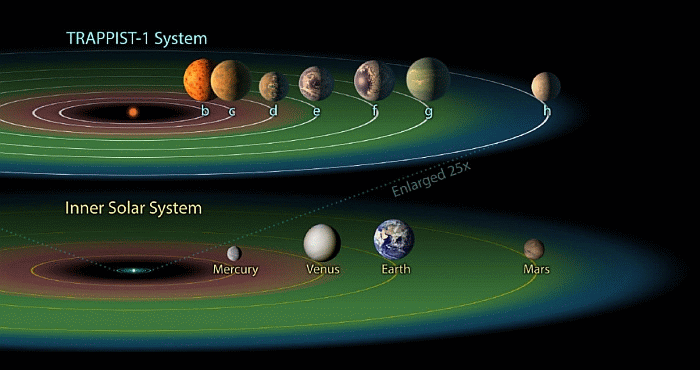
The TRAPPIST-1 Solar System is a new discovery by the astronomers intended to be the best target in the Galaxy to search for outer space life. TRAPPIST-1 will offer planetary scientists an extraordinary new window on the configuration of solar systems and the behavior of rock-strewn worlds, even if they are not home to aliens. Without mincing words, this newly discovered solar system is really cool discovery.
It is noteworthy that TRAPPIST-1 is a star that is just a bit bigger than Jupiter and this is the first time astronomers have discovered quite a lot of terrestrial planets tracking a sole star, and this new solar system could be the best target to search for outer space life.
TRAPPIST-1 Solar System: What You Ought to Know
However, do not pack your bag yet, if you are thinking about visiting TRAPPIST-1, which is the place transits are every day spectacle and the dim glow of the star provides the look of a long-lasting sunset.
TRAPPIST-1 is 39 light years apart
Of course, it will be crazy close in the plan of the cosmos. Only the Milky Way galaxy is 100,000 light years transversely. Nevertheless, it would take about 4 decades to arrive at TRAPPIST-1, even if humanity boasted a spaceship competent of moving very fast.
It is a kind of wimpy star
TRAPPIST-1 is a mega-calm dwarf star, which is 10 times slighter and 2.5 times cooler than the sun. As a matter of fact, it is more like Jupiter and not to the sun. The scheme is definitely an alien one, despite the fact that the TRAPPIST-1 planets are Earth-resemblance.
We cannot see the planets openly
The scientists were able to discover the planets by making use of the transiting method, where they made use of miniature dips in light from the star emanated from the planets passing all over its face.
With the Hubble Space Telescope, astronomers can as well examine the light that passes all the way through the ambiances of the planets to determine the molecules contained by those atmospheres with ground-based observatories and the James Webb Space Telescope which will soon be launched. But the fact is that it will impossible to image the solar system directly with the existing technology. The planets will be impossible to differentiate among their glares because they are very close to their star.
